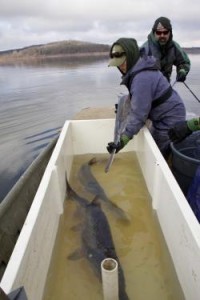A couple of weeks ago I tried to get someone to bet with me. I knew I had two sure things but no one would take me up on either bets. This happened as I heard the news about the shooting at an Oregon college.
The first bet was that politicians would be calling for new gun control laws based on this shooting before anything at all was known about it. And the other was that the Brady gun control Bunch would get a fundraising email out within hours of the shooting. I was right on both.
President Obama went on TV within two hours of the shooting to call for ‘common sense” gun control measures. The main one he pushed was extending the background check to all gun sales, even the ones between parent and child.
As usual, the shooter in Oregon used guns that had been purchased after a background check was done. Extending the background check would have made no difference. I always want to ask those calling for gun control laws one question – if your desired law had been in effect, would it have made any difference. The answer in every case is “no.”
Along those lines, I was disappointed in an editorial from the Brunswick News reprinted in the Griffin Daily News on 10/13/15 titled “Something Must Be Done About Guns.” As I said in a column a few weeks ago, calling for “something to be done” when the something can have no effect on gun violence makes as much sense as cutting firewood and leaving it in the woods. You are doing “something,” but it is not going to warm your house.
Politicians constantly tell gun control lies.
President Obama also said it was terrible that gun violence research is suppressed. In a 10/11/15 editorial in the Griffin Daily News, Dick Polman echoed this. Both claimed congress passed a law banning research on gun violence.
Unlike Obama, Polman did finally admit neither one of them were telling the truth. As he states, “Technically, the law doesn’t literally ban federal gun research, the language reads, None of the funds may be used to advocate or promote gun control.”
That’s right, the law keeps gun ban nuts from using federal tax money to push their agenda. If they are unbiased and willing to do real research, they can still do it. It only stops those going into their so called “research” with the goal of slanting it so it pushes gun control. Anyone doing research with a preset outcome is not doing research.
Hillary Clinton claimed gun manufacturers and sellers are not held to the same liability law as other manufacturer. Even the liberal media had to admit she was lying. She was whining about a law passed a few years ago saying gun manufacturers and sellers could not be sued if the gun was used illegally.
They can still be sued if the gun malfunctions, just like any other product. The goal of the gun banners was to sue the gun industry out of business. That is why the law had to be passed. If it had not been passed, frivolous law suits would bankrupt the industry.
Suing a gun seller for a gun used in crime makes as much sense as suing Walmart for selling a baseball bat used to beat someone. Justice is not the gun banners goal, the elimination of guns by any means is their goal.
Within a few hours after the Oregon shooting I got a fund raising email from the Brady gun control Bunch. They are like buzzard circling roadkill. They use any dead body to try to get money and further their cause.
They pushed the same old usless agenda of universal background checks and limits on the kind of guns law abiding citizens can buy. Again, nothing they are pushing would have any effect at all on any of the killings they are using.
President Obama also made the ridiculous statement that it is easier to buy a gun than it is to buy a book. Go to any store selling both and see for yourself how dumb that claim is.
It may be true that it is easier for a little gang banger to get a gun than a book. In a headline article in the Griffin Daily News this past Friday an article told how several kids younger than 18 were arrested for gang activity.
There were several guns in the group and some of them were charged with various gun related charges. Since it is illegal for anyone younger than 18 to have a handgun, and illegal for a felon of any age to have a gun, several of them faced those charges.
The only way to do “something” about guns is to go after those breaking the law with them. Catch a gang banger with an illegal gun. Lock him up for a long time. Someone commits a crime using a gun? Don’t plea bargain the gun charge away, make it mandatory they server a long time where they and their illegal guns can’t do any damage to law abiding citizens.
The most recent police officer murder in New York was by a gang banger with at least 23 arrests over the past 16 years. One arrest was for shooting an 11 year old boy. Why was he still alive, much less free on the streets to shoot a police officer?
Hillary called me a terrorists since I am a member of the NRA. Until we take action against criminals by putting them where they can’t use a gun illegally, gun crime will be blamed on me and you, by those pushing a gun control agenda.
Go after the criminals, not the law abiding citizens!



